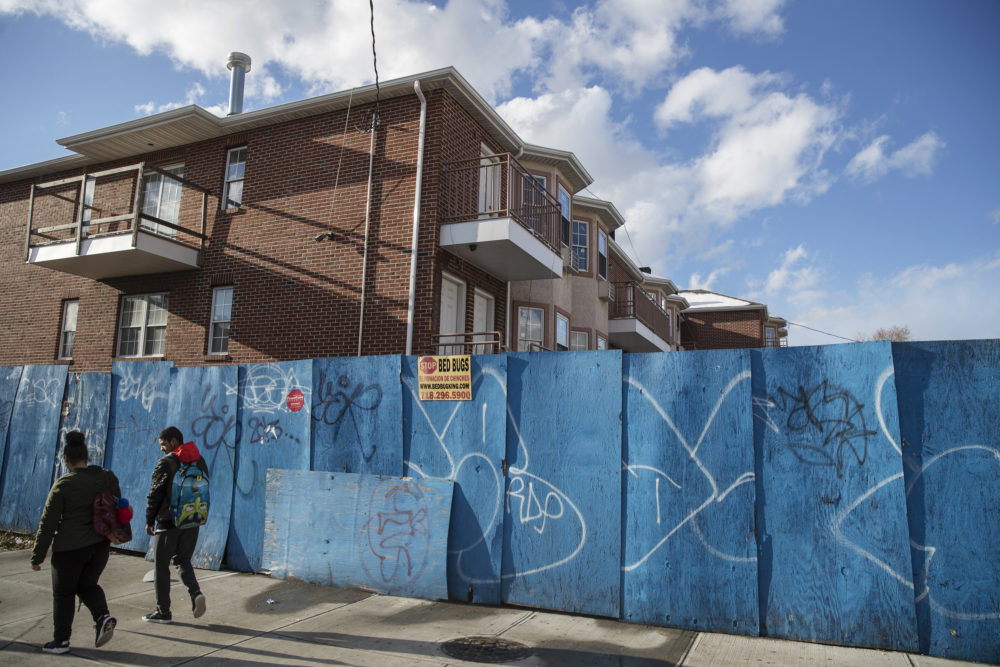In the last few months both Mayor de Blasio and Governor Cuomo have announced ambitious job plans for Brooklyn.
In his February State of the City address, de Blasio pledged to create 40,000 new jobs citywide over the next four years, with many here in Brooklyn, including a commitment to allocate $136 million dollars for a new center for garment manufacturing in Sunset Park.
In March, Cuomo announced a $1.4 billion plan for central Brooklyn to “finance more affordable housing, bolster access to medical care, increase jobs and expand youth and recreational programs.”
But perhaps the best place for both to start spurring job creation in Brooklyn is in East New York. And maybe the start of the solution is not hundreds of millions of dollars of government spending, but something as simple as relocating government jobs there.
Brooklyn Borough President Eric Adams has been calling upon the City to consider moving government agencies to the Broadway Junction area of East New York. The rationale would be to bring city services closer to the residents who need them. Additionally, the move would stimulate economic activity in the area by bringing jobs and commercial foot traffic to an area long in need of more investment.
The Broadway Junction transit hub has service from the A, C, J, Z, and L lines (Photo by Stan Wiechers/Wikimedia Commons)
The idea has a lot of merit. Broadway Junction is a significant transit hub for Brooklyn. Brooklynites in the surrounding area could more readily access government services if they were relocated closer to their communities there. Further, the economic activity generated by the presence of government offices in the area could be staggering. Private developers often have a hard time financing new commercial office buildings without first securing an “anchor tenant” to take a significant chunk of space. Government could provide that anchor tenancy, while paving the way for additional office space to be built on site for private companies to set up operations.
These government leases are key to helping private developers finance new office construction anywhere, particularly in neighborhoods lacking investment. But their power is not limited to helping to create new space to house jobs. Think of the thousands of office workers eating in local restaurants, shopping in local stores, drinking coffee and beer in local cafes, supporting the neighborhood economy with their significant daily buying power.
You would not have to look far for government offices to relocate there. Downtown Brooklyn alone contains more than 7 million sq. ft. of government-owned and leased space. The city and state have an opportunity to take stock of these real-estate assets and rationalize their use for the city we live in today.
There is more than 1.2 million sq. ft. of federal, state and city owned commercial space surrounding Cadman Plaza, notably the Brooklyn Municipal Building at 210 Joralemon St., the 65 Court St. building, and the Federal Building and Court House at 271 Cadman Plaza East. These architectural gems, of vastly different styles, could be re-purposed to create a new urban campus for entrepreneurs and start-ups drawn to the Brooklyn Tech Triangle, as well as new retail opportunities to inspire a better pedestrian experience.
By changing the tenant base of these assets, government could avoid having to spend additional money to renovate these aging facilities. Government workers could be consolidated on certain floors rather than whole buildings, or relocated to modern facilities in more efficient buildings built by partners in the private sector, particularly in neighborhoods in desperate need of economic development like East New York.
Gov. Cuomo after speaking at Medgar Evers College in March. He announced Vital Brooklyn, a $1.4 billion plan to direct resources to disadvantaged neighborhoods (Photo by Christopher Lee/The New York Times/Redux)
This policy–using government tenants to anchor new commercial space and re-position existing space–is a tried-and-true method. It worked for the original World Trade Center and its successor, as well as paving the way for MetroTech in Downtown Brooklyn a generation ago. Today, deals with government tenants at buildings like 95 Evergreen Avenue in Bushwick help make projects feasible.
The mayor and the governor should work with borough president Adams to identify government agencies that could take up residence in East New York, and then announce to the development market that they are open for business to anyone that can use their presence to finance new office construction in Broadway Junction.
Using city leases to generate high-impact economic development projects is a low-cost and smart first step in bringing opportunity to Brooklyn’s disadvantaged neighborhoods. The task would undoubtedly require coordination among city agencies, as well as with private developers and local stakeholders, but it could result in substantial and recurring benefits.
